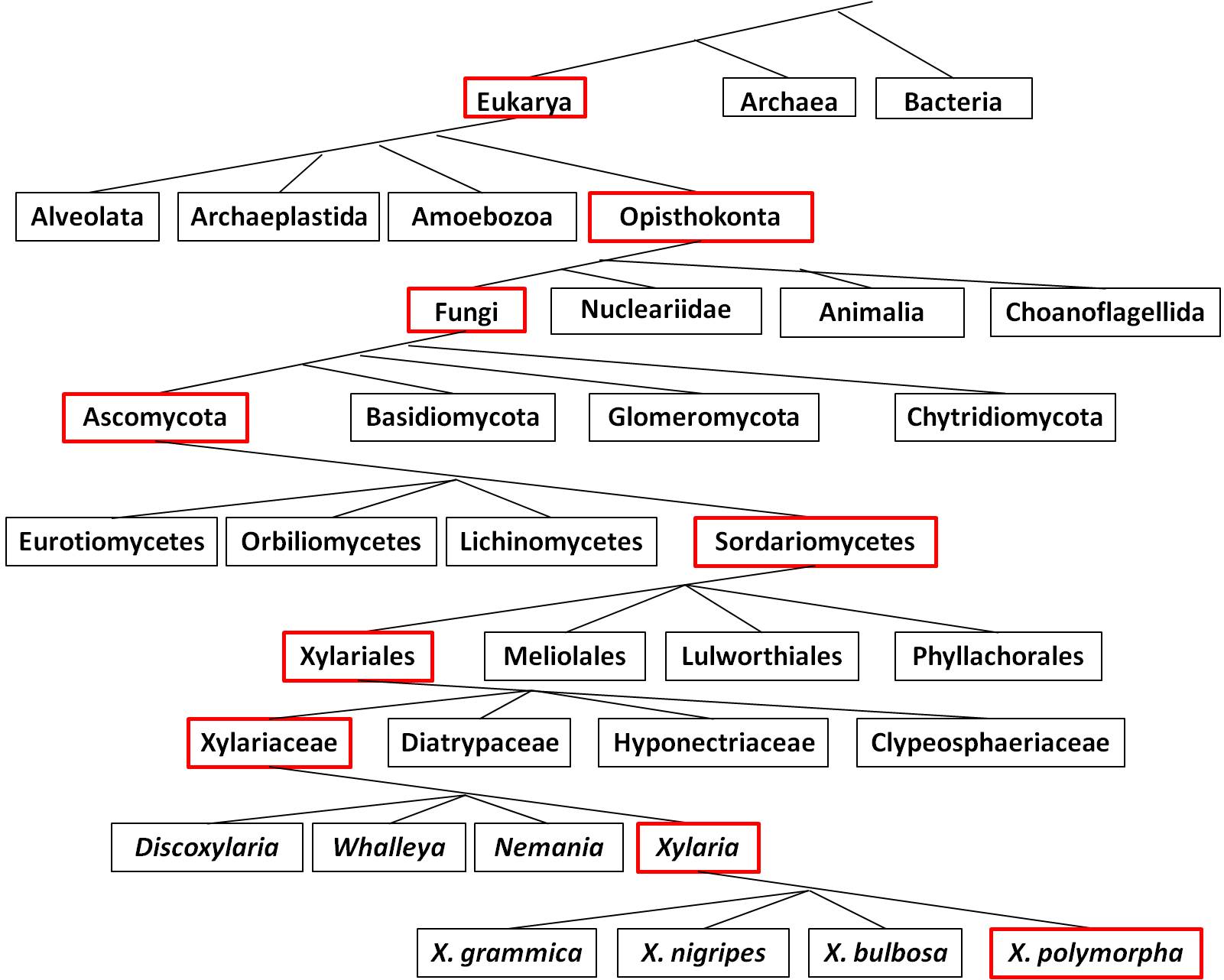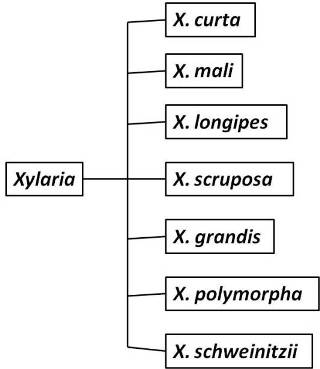What's Related to What
In this first phylogenetic tree, the wide diversity of fungi, especially Xylaria fungi is illustrated. When most people think of fungi, they think of the few species of fungi that are actually eaten (e.g. the delicious morel mushroom Morchella esculentoides). However, the fungi kingdom consists of five different phyla plus a dumping group for all the species that don't fit into any of the phyla called "deuteromycetes." Fungi phyla are organized by the morphology of their sexual spore producing structures and all fungi with no known sexual stages are placed within the "deuteromycetes"19. To make things more complicated, at least 19 classes of ascomycota (only four shown in the phylogenetic tree below to reduce clutter) have been classified. Multi-gene sequences have further separated sordariomycetes into 16 orders (again, not all the orders are shown below for simplicity)16. Seven families, classified by morphological features, including over 92 genera and 176 species make up the xylariales order15. Can you say diversity?!? Forty of the 92 genera fall under the xylariaceae family. At least 17 species of Xylaria have been classified7.

The humorous side to the large diversity of Xylaria is that without careful analysis of ascospore morphology and culture characteristics, most people, even scientists, have a hard time distinguishing between Xylaria species14. In fact, because of its many forms, Xylaria polymorpha is thought to even be 5-10 separate species18. This next phylogenetic tree includes seven Xylaria species found in the United States that can easily be confused as Xylaria polymorpha and a brief description of morphological differences between each species14. Hopefully this website can help clarify differences of Xylaria polymorpha from other similar Xylaria species. (Both phylogenetic trees were constructed by the author of this website based upon multiple references from the reference page.)

X. curta has the smallest
ascospores of these Xylaria, ranging from 9-10Ám in
length.
Ascospores of X. mali range
from 13-17Ám long with straight germ slits.
Similarly, ascospores of X. longipes range from
13-15Ám in length but with spiraling germ slits along the
entire surface of the ascospores.
X. scruposa has a wide range of ascospore size from
16-22Ám long and germ slits either straight, oblique, or
slightly spiraling.
X. grandis differentiates itself from the others with
thickened ascospore ends, with lengths from 20-23Ám long.
X. polymorpha has larger ascospores 20-28Ám
long, with mostly straight germ slits running about half the
length of the ascospore.
Everything about the ascospores of X. schweinitzii is identical
to X. polymorpha except almost all the germ slits are
oblique, curving, or spiraling14.
Please continue on to learn about what Xylaria polymorpha looks like in the wild and its lifecycle by clicking here.